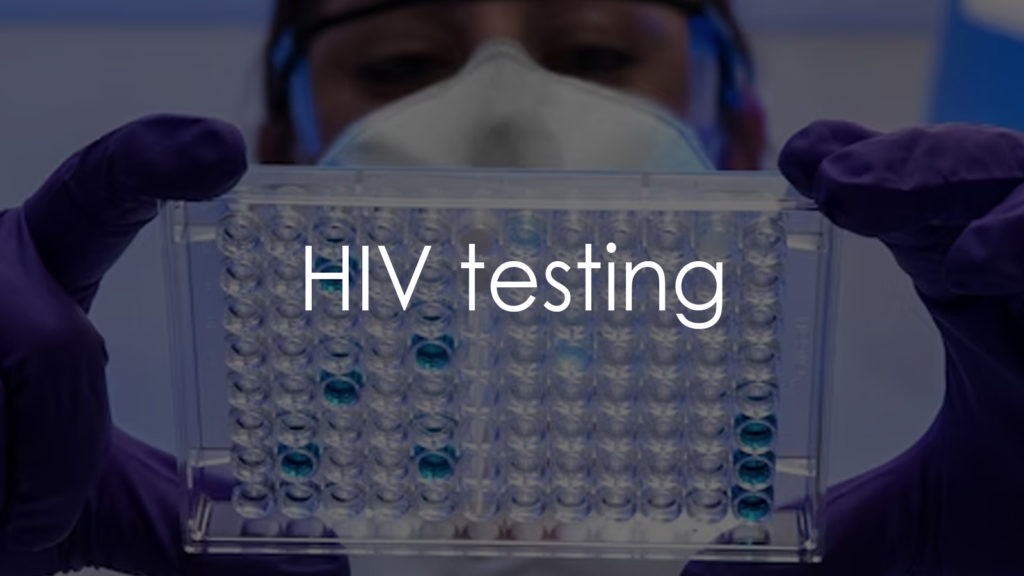HIV testing is a crucial tool in the global fight against HIV/AIDS, allowing for early detection, timely treatment, and prevention of the virus’s spread. Human Immunodeficiency Virus (HIV) is a virus that attacks the immune system, weakening the body’s ability to fight infections and diseases. Without treatment, HIV can lead to Acquired Immunodeficiency Syndrome (AIDS), a potentially life-threatening condition. This article will explore the purpose of HIV testing, the different types of tests available, the procedure for conducting them, the interpretation of results, and important considerations when receiving a diagnosis.

Why is it needed?
HIV testing is necessary for several critical reasons:
- Early Detection: Early identification of HIV allows for timely initiation of antiretroviral therapy (ART), which can significantly improve health outcomes and reduce the risk of transmitting the virus to others.
- Prevention: Knowing one’s HIV status helps prevent the spread of the virus through informed behavioral changes and preventive measures.
- Monitoring and Management: Regular testing is essential for people at high risk of HIV exposure, such as those with multiple sexual partners, intravenous drug users, or individuals in regions with high HIV prevalence.
- Pregnancy: Pregnant women are encouraged to get tested to prevent mother-to-child transmission of HIV during childbirth or breastfeeding.
There are several types of HIV tests, each with specific advantages and limitations:
Antibody Tests
- Description: Detects antibodies to HIV in blood or oral fluids.
- Window Period: Typically 3-12 weeks after exposure.
- Procedure: Blood sample drawn from a vein or fingerstick, or oral fluid sample collected with a swab.
- Turnaround Time: Results available in a few minutes to a few days.
- Examples: Rapid HIV tests, home HIV test kits.
Antigen/Antibody Tests
- Description: Detects both HIV antibodies and antigens (p24 protein) in the blood.
- Window Period: 2-6 weeks after exposure.
- Procedure: Blood sample drawn from a vein.
- Turnaround Time: Results usually available within a few days.
- Examples: Fourth-generation HIV tests.
Nucleic Acid Tests (NATs)
- Description: Detects HIV RNA in the blood.
- Window Period: 1-4 weeks after exposure.
- Procedure: Blood sample drawn from a vein.
- Turnaround Time: Results available within a few days.
- Examples: HIV RNA tests, also used to monitor viral load in diagnosed individuals.
Procedure for taking the test
The procedure for HIV testing depends on the type of test being conducted but generally involves the following steps:
- Pre-Test Counseling: A healthcare provider discusses the testing process, its importance, and what the results might mean.
- Sample Collection: Depending on the test type, a blood sample is drawn from a vein or fingerstick, or an oral fluid sample is collected using a swab.
- Laboratory Analysis: The sample is analyzed in a laboratory, or for rapid tests, processed on-site using a test kit.
- Post-Test Counseling: After receiving the results, a healthcare provider discusses the implications and next steps, whether the result is positive or negative.
Interpretation
Interpreting HIV test results involves understanding the window period, the type of test used, and the accuracy of the test:
- Negative Result:
- Meaning: No HIV antibodies, antigens, or RNA detected.
- Considerations: If tested within the window period, a follow-up test may be needed to confirm the result.
- Positive Result:
- Meaning: HIV antibodies, antigens, or RNA detected.
- Confirmatory Testing: A positive result from an initial test is usually confirmed with a second, different type of test to ensure accuracy.
- Indeterminate Result:
- Meaning: The test result is unclear.
- Next Steps: Additional testing is required to determine the individual’s HIV status.
Important Considerations
When receiving HIV test results, several factors should be taken into account:
- Window Period: Testing during the window period might not detect a recent infection. Follow-up testing is often recommended.
- Confidentiality: HIV testing and results should be confidential. Patients have the right to privacy.
- Stigma: There is still significant stigma associated with HIV. Counseling can help address emotional and psychological impacts.
- Support and Resources: Access to medical care, support groups, and educational resources is crucial for individuals diagnosed with HIV.
Conclusion
HIV testing is a vital component in the global effort to control and eventually eliminate HIV/AIDS. Early detection through timely testing allows for effective management of the virus, improves health outcomes, and reduces the transmission rate. Understanding the types of HIV tests, their procedures, and the interpretation of results can empower individuals to take proactive steps in managing their health. Regular HIV testing, especially for those at high risk, remains a cornerstone of preventive healthcare and public health strategy.